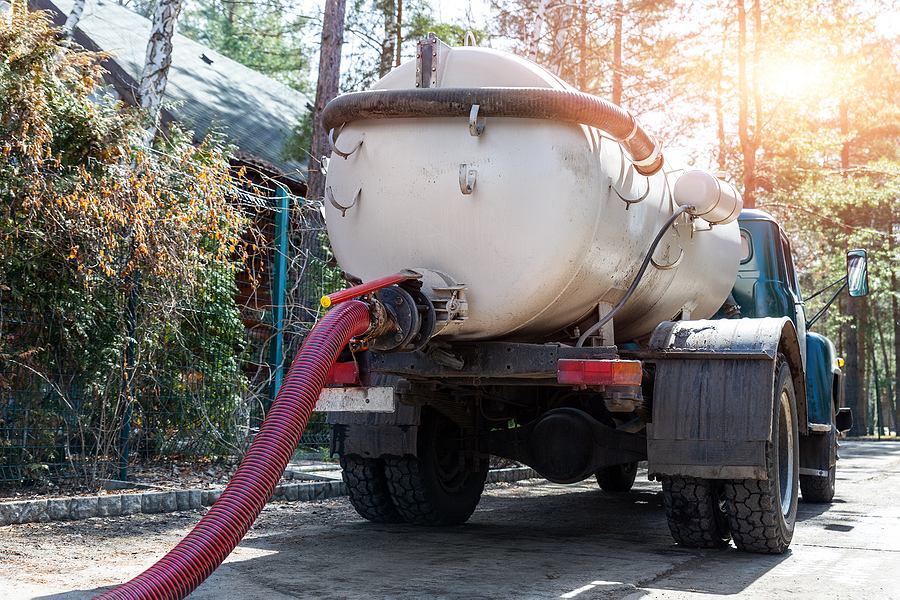
Jan 18, 2024
Both smoke and dye tests are valuable tools for diagnosing issues with septic systems. While they both serve similar purposes, they work in slightly different ways.
In today’s blog post, Septic Blue of Charlotte will explain how smoke and dye tests work. Septic Blue of Charlotte is a local septic service company that you can rely on for all your septic needs, from septic tank installation to septic tank pumping, septic tank repair, and many more.
Smoke testing is a diagnostic technique used to pinpoint leaks and other defects in septic systems. It’s a safe and effective way to identify issues such as septic leaks before they lead to bigger problems, like environmental contamination or structural damage.
A non-toxic, white smoke canister is inserted into an access point like a cleanout or vent pipe. The smoke, made from mineral oil or vegetable glycerin, is pressurized and travels through the entire septic system. Septic technicians then visually track the smoke’s escape points. This can reveal leaks in pipes, cracks in the septic tank, or faulty connections. In some cases, special equipment like smoke detectors or fluorescent tracers can help pinpoint the exact location of the leak.
Smoke testing is a proactive way to find and fix septic system leaks before they cause environmental damage. This technique can also reveal other issues like blockages, improper drainage, or failing components before they become major headaches. This can save money on repairs and extend the lifespan of your septic system.
Dye testing is a diagnostic technique used by septic technicians to pinpoint leaks, blockages, and other issues within a septic system. It’s a safe and effective way to visually trace the flow of wastewater, helping identify problems before they lead to bigger ones like environmental contamination or structural damage.
A non-toxic, colored dye, usually green or red, is introduced into the septic system. This can be done through various methods, like flushing it down a toilet, pouring it directly into the septic tank, or injecting it through an access point like a cleanout or vent pipe. The technicians then monitor the system for signs of the dye’s emergence. This involves visually inspecting the drainfield area, surrounding soil, and any nearby water bodies. In some cases, special equipment like ultraviolet (UV) lights can help detect the dye, even if it’s underground.
Dye testing enables septic experts to pinpoint the exact location of leaks, making it easier to repair them and prevent environmental damage. The dye's path can reveal other issues like blockages in pipes, improper drainage in the drainfield, or faulty connections between components. This information helps technicians determine the best course of action for septic tank repair, drainfield repair, or replacement.
The best test for your septic system will depend on the specific circumstances. If you’re unsure which test is right for you, it’s best to consult with a qualified septic system professional. They can assess your system and recommend the most appropriate test based on your needs.
Looking for a professional septic company to diagnose your septic system? Look no further than Septic Blue of Charlotte. We are a local septic service company offering professional septic services, including septic tank installation, septic tank cleaning, septic system maintenance, and many more. If you’ve noticed signs of septic system problems, do not hesitate to contact Septic Blue of Charlotte. Our septic technicians can perform septic tank pumping, fix a failing drainfield, repair a malfunctioning septic tank, and help you with all of your septic system needs.